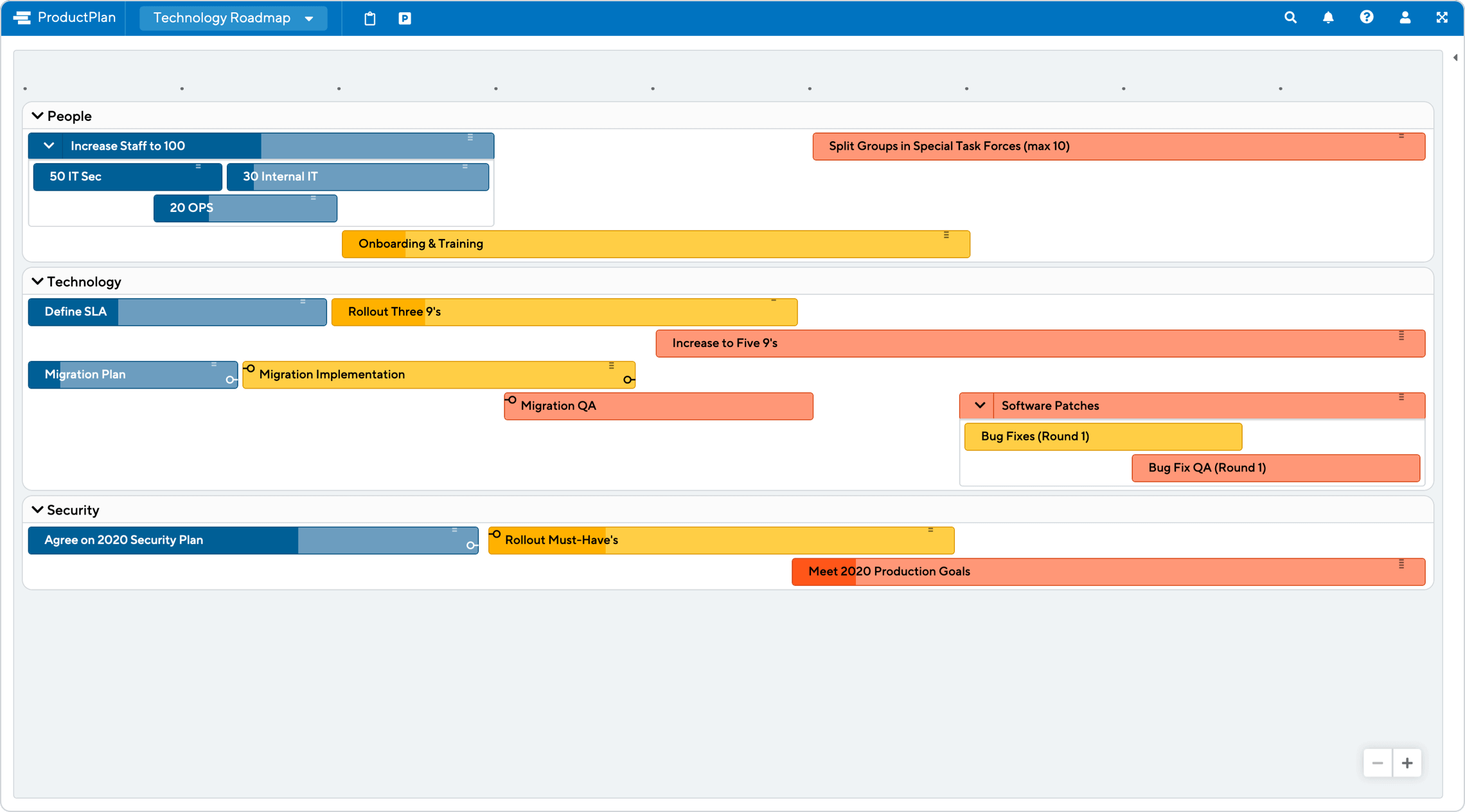Using a technology roadmap helps a company plan out the best way to introduce a technological change in the business. This plan could include rolling out new software for employees, upgrading the organization’s digital network, or migrating to a new email program. Technology roadmaps lay out the strategic initiatives and can help assess the implications of changing a business’s technology environment—aiding in avoiding security and regulatory weaknesses wrought on by the change. The audience for a technology roadmap will often be stakeholders looking to the IT team for internal-facing systems and solutions. The technology roadmap may also be shared with partners and vendors who rely on integrations and other technology from the organization.
Key Features
- Great for IT teams that need to keep internal stakeholders in sync
- Roadmap does show dates to keep discussion more strategic and less tactical
- The phase-based Legend communicates completion status to internal stakeholders
In the example technology roadmap above, the roadmap is divided into three swimlanes: people, technology, and security. The color-coded legend indicates the phase that each initiative falls into, from planning to implementation to optimization, which allows anyone viewing the roadmap to quickly understand the status of everything in flight. The example above is a roadmap without dates since these types of roadmaps often have longer time horizons and/or exclude dates altogether to keep the focus on strategy—rather than deadlines.
